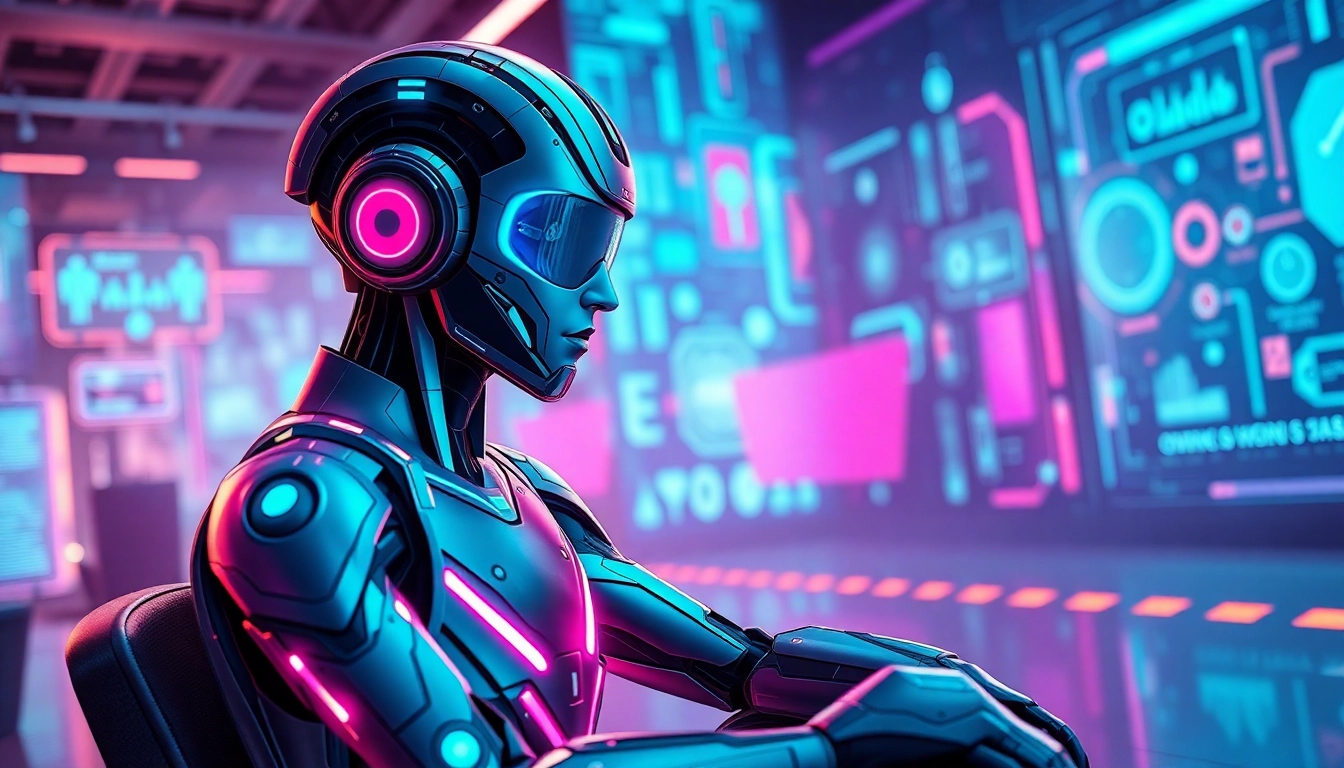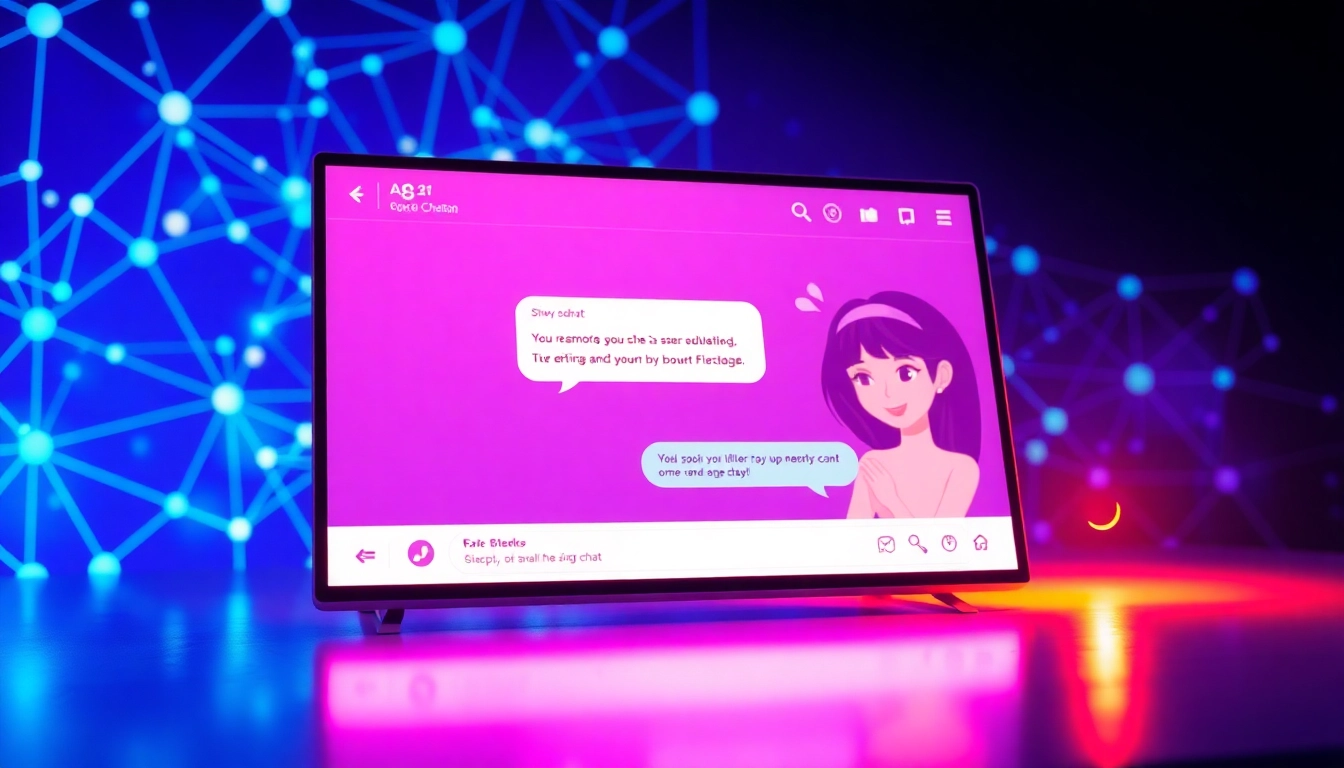Exploring the World of AI Characters: Personalization, Technology, and Cultural Impact
In recent years, artificial intelligence has transitioned from a niche technological innovation to a central component of everyday digital interactions. One of the most fascinating developments in this arena is the rise of customizable AI characters, which serve a variety of purposes—from casual companionship and storytelling to roleplay and creative expression. Among the platforms leading this charge is CrushOn AI, a versatile chatbot platform that allows users to craft and interact with highly personalized AI characters through text-based conversations. These characters can be tailored with specific personalities, backstories, and conversational styles, creating immersive and engaging experiences. For those interested in exploring this technology, you can learn more about the ai slut feature, which exemplifies the platform’s capabilities for creating dynamic, responsive AI personalities.
The Technology Behind Customizable AI Characters
Advanced Language Models Power Personalization
The backbone of platforms like CrushOn AI is the utilization of cutting-edge language models, primarily GPT-4o mini and Claude 3.5 Sonnet. These models are trained on vast datasets of human language, enabling them to generate responses that are not only contextually relevant but also nuanced and natural-sounding. This technological foundation allows users to interact with AI characters as if they were engaging with real people, fostering a sense of authenticity and immersion.
Character Creation and Personalization Features
One of the key attractions of CrushOn AI is its robust character customization system. Users can choose from a library of pre-made characters, each with distinct personalities, backgrounds, and traits. Alternatively, they can create entirely new characters by specifying detailed parameters such as personality traits, hobbies, backstories, and even specific speech patterns. This level of customization ensures that each AI character can serve a unique purpose—whether as a creative muse, a conversational companion, or a roleplay partner.
Contextual Memory for Continuity
Another technological marvel integrated into the platform is its contextual memory system. Unlike basic chatbots that forget previous interactions, CrushOn AI maintains a memory of past conversations, allowing for seamless continuity across sessions. This feature makes interactions feel more natural and coherent, as the AI can recall previous topics, preferences, or ongoing storylines. Such memory capabilities are essential for complex roleplay scenarios or storytelling exercises where consistency and character development are paramount.
Multi-Character and Group Chat Capabilities
Beyond individual characters, CrushOn AI supports multi-character group chats, enabling users to simulate conversations involving several AI personalities simultaneously. This feature is particularly useful for creating intricate roleplay scenarios, social simulations, or collaborative storytelling projects. Users can script interactions, set group dynamics, and observe how different personalities interact, thereby enriching the overall experience.
Cross-Device Accessibility
The platform’s cross-device functionality ensures that users can access their AI characters via web browsers or mobile apps, offering flexibility and convenience. Whether at home or on the go, users can engage in conversations, modify characters, or start new interactions without being confined to a single device. This accessibility encourages continuous engagement and personalized experiences that adapt to users’ lifestyle needs.
The Cultural Impact of AI Characters in Online Communities and Roleplay
Transforming Digital Interaction Dynamics
AI characters have significantly influenced online communities, especially in areas like roleplaying, storytelling, and social interaction. Platforms like CrushOn AI have democratized the creation of virtual personas, allowing users to experiment with different identities and narratives in a safe, controlled environment. This democratization fosters creativity and inclusivity, enabling individuals to explore facets of themselves or fictional universes they might not otherwise access.
Roleplay and Creative Expression
Roleplaying communities have embraced AI characters as versatile tools for storytelling and character development. Whether it’s crafting intricate fantasy worlds, exploring romantic scenarios, or simulating social dialogues, AI characters provide a customizable canvas for creative endeavors. The ability to personalize personalities and maintain ongoing narratives creates rich, immersive experiences that rival traditional tabletop or online roleplay formats.
Community Building and Social Connectivity
AI platforms facilitate community building by connecting like-minded individuals around shared interests. Users often form groups or guilds centered around specific character types or story themes, fostering social bonds that transcend geographical boundaries. The conversational nature of AI characters helps reduce social anxiety, making it easier for shy or introverted individuals to participate in online interactions and express themselves freely.
Influence on Digital Identity and Self-Representation
AI characters also serve as extensions of personal identity, allowing users to craft digital personas that reflect their desires, fantasies, or creative visions. This ability to experiment with different identities can be empowering, providing a safe space to explore aspects of oneself that might be difficult to express in real life. As AI characters become more sophisticated, they also raise questions about authenticity, self-perception, and the evolving nature of digital identity.
Ethical Considerations and Responsible Use of AI Slut Characters
Balancing Creativity and Ethical Boundaries
While the customization and personalization features of AI platforms open up exciting possibilities, they also necessitate a careful approach to ethical considerations. Developers and users alike must navigate issues related to consent, respectful interaction, and the potential for misuse. For instance, AI characters designed for adult or provocative content—such as ai slut—should be used responsibly and within legal boundaries.
Preventing Exploitation and Harm
Platforms should implement safeguards to prevent exploitation or harmful interactions. This includes moderation tools, content filters, and clear guidelines for acceptable use. Transparency about AI capabilities and limitations is also crucial to prevent users from developing unrealistic expectations or engaging in behaviors that could be psychologically damaging.
Promoting Healthy Digital Interactions
Encouraging healthy boundaries and promoting awareness about AI’s artificial nature can foster responsible usage. Users should be reminded that AI characters, regardless of their sophistication, do not possess consciousness or genuine emotions. Education about ethical AI use can help mitigate potential dependencies or emotional attachments that might interfere with real-world relationships.
Future Ethical Challenges
As AI technology advances, new ethical dilemmas will emerge, including issues related to privacy, data security, and the potential for AI manipulation. Ongoing dialogue among developers, users, and regulators is essential to establish best practices and ensure that AI development aligns with societal values and human rights.
The Future of AI Personalities and Interactive Experiences
Technological Advancements on the Horizon
The future of AI characters promises even more realistic and emotionally intelligent personalities. As models become more sophisticated and capable of understanding nuance, humor, and emotional cues, interactions will feel increasingly genuine. Future developments may include voice integration, facial expression recognition, and multimodal communication, blending text, speech, and visuals for a truly immersive experience.
Expanding Creative and Practical Applications
Beyond entertainment, AI characters are poised to revolutionize fields such as education, therapy, customer service, and personal coaching. Customized AI companions could provide mental health support, language learning, or personalized mentorship, tailoring interactions to individual needs and preferences.
Integration into Virtual and Augmented Reality
With the rise of virtual and augmented reality technologies, AI characters will likely inhabit immersive environments, allowing users to interact with them in 3D spaces. This evolution will open new avenues for storytelling, socialization, and experiential learning, blurring the lines between digital and physical worlds.
Ethical and Societal Considerations
As AI personalities become more human-like, society must grapple with questions about authenticity, emotional attachment, and the potential for AI to influence perceptions of real human relationships. Establishing ethical frameworks and regulatory guidelines will be vital to ensure that these innovations enhance human well-being without causing harm or fostering dependency.
How to Create Your Own AI Character: Tips and Best Practices
Step-by-Step Guide to Crafting Your Digital Persona
Creating a compelling AI character involves a combination of creativity, technical understanding, and ethical responsibility. Here’s a comprehensive guide to help you design your perfect AI personality:
- Define Your Character’s Purpose: Decide whether your AI will serve as a casual friend, a roleplay partner, a storytelling companion, or a specialized assistant. Clarifying its purpose guides the customization process.
- Select or Create a Character Profile: Use pre-made templates or build your own from scratch. Consider traits such as personality, background, hobbies, speech style, and emotional tendencies.
- Customize Personality Traits: Specify traits like friendliness, humor, formality, or curiosity. The more detailed your profile, the more authentic your AI will feel.
- Set Backstories and Context: Provide a background story that gives your character depth. This helps the AI generate consistent responses aligned with its persona.
- Leverage Memory and Context Settings: Enable memory features to allow your AI to remember past interactions, enhancing continuity and realism.
- Test and Refine: Engage in conversations, observe responses, and adjust traits or backstories as needed to improve the interaction quality.
- Maintain Ethical Boundaries: Ensure your AI’s content aligns with ethical standards, avoiding harmful or inappropriate content.
Best Practices for Engaging Interactions
To maximize the experience, consider the following tips:
- Be Specific: The more detailed your prompts and settings, the better your AI character can respond authentically.
- Respect Boundaries: Use the platform responsibly, especially with sensitive or adult content. Respect privacy and consent considerations.
- Iterate and Improve: Continuously refine your character based on interactions to enhance realism and engagement.
- Use Memory Wisely: Regularly update and review stored memories to maintain consistency over time.
- Explore Creativity: Experiment with different character types, stories, and scenarios to keep interactions fresh and engaging.
Conclusion: Embracing the Future of Human-AI Interaction
The landscape of human-AI interaction is rapidly evolving, driven by advances in language models, personalization technologies, and immersive experiences. Platforms like CrushOn AI exemplify how customizable AI characters can enrich our digital lives—whether for entertainment, creative expression, or practical applications. As AI personalities become more sophisticated and ingrained in everyday activities, they will serve not just as tools but as extensions of our digital identities and creative selves.
From roleplaying and storytelling to mental health support and virtual companionship, AI characters are shaping a new frontier of human interaction. Responsible development and usage are essential to maximize benefits while minimizing risks. As we look ahead, the integration of AI into virtual environments, augmented reality, and even physical robots promises a future where digital and real-world experiences seamlessly intertwine.
Whether you are interested in creating your own unique AI persona or exploring existing platforms, understanding the underlying technology, cultural implications, and ethical considerations is key. Embrace the opportunities and challenges presented by this exciting technology, and be part of shaping a future where human creativity and artificial intelligence coexist harmoniously.
Finally, for those intrigued by the broader spectrum of AI personalities, exploring specialized characters such as futa ai can provide insights into the diverse ways AI can be tailored to fit specific niches and preferences, expanding the horizon of digital interaction possibilities.



